#collodi italy
Text

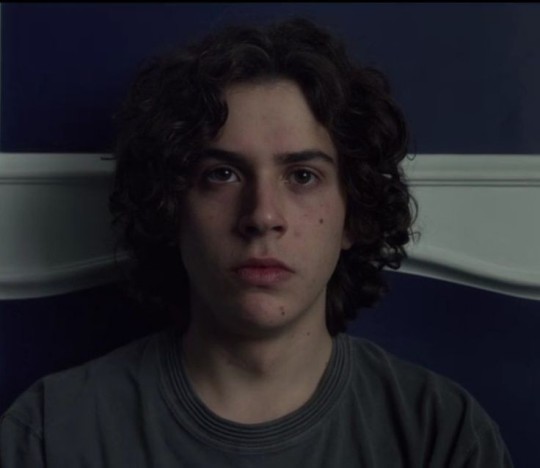
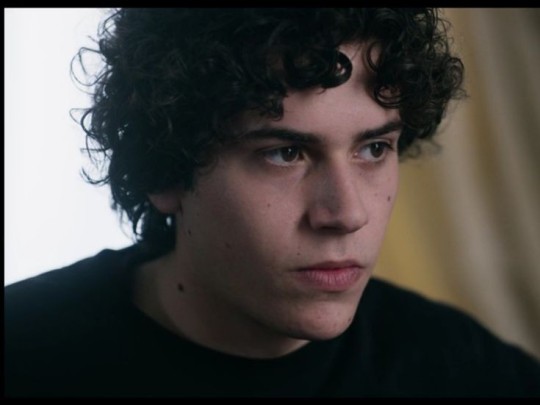
#baby netflix#netflix#baby#brando de sanctis#mirko trovato#italy#netflix italy#collodi italy#mirko#trovo#branbo#santis#2018
67 notes
·
View notes
Text
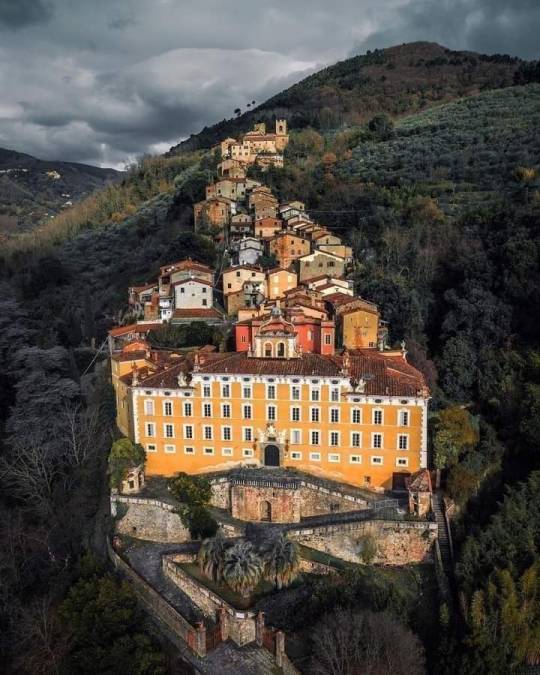
C O L L O D I
157 notes
·
View notes
Text

Carlo Collodi, Pinocchio, the adventures of a marionette, 1904.
#bizarre au havre#illustration#carlo chiostri#carlo collodi#book#pinocchio#italia#marionette#livre pour enfant#italie#fairy tale
52 notes
·
View notes
Text

Collodi, Il villaggio di Pinocchio
54 notes
·
View notes
Text
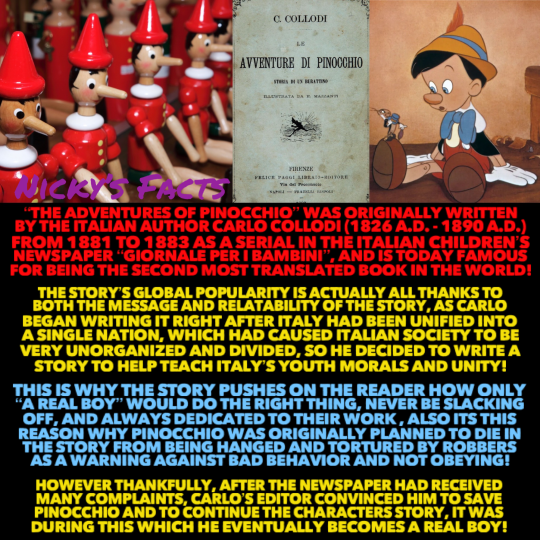
Pinocchio’s way more popular and darker then most people realize!
🇮🇹👦🏻🇮🇹
#history#pinocchio#carlo collodi#italy#disney#writing history#fairy tales#newspaper#novel#1880s#disney history#florence#historical figures#disney girl#disney world#puppet#disney 100#animation history#childhood#popular books#author#disney movies#italian history#role model#boyhood#nickys facts
9 notes
·
View notes
Text
Collodi, Italy

4 notes
·
View notes
Text
Ok so,
to startIt’s from this early summer that I’m thinking of take part to the Tumblr book club initiative and, because I’m italian, partecipate in it with a classic piece from Italian literature (I’m also well navigate in spanish and french lit but I want to play at home).
Because I’m a Master’s degree working students, anything that had nothing to do with with university/work/all the time left for me to go outside and touch some grass has always been postponed, but now I finally managed to pick up this idea and try to make it happen.
So still in June I brainstormed some ideas about lit classics all in public domain and if I not started yet is because I’m pretty indecise; I hypothesize that the newsletter on substrack could start next year and, accounting to the amount of material, I still have to decide if do it daily, weekly, monthly.
Considering that the idea of a Divine Comedy Weekly has already been taken by @lefthandedleague and if you’re interested you can find the link here, the other ideas that come to my mind are:
Pinocchio by Carlo Collodi, yes the original novel, there are actually 36 chapters so I could made it weekly, there’s a movie coming out each year about it and the novel is of course public domain, so still a pretty popular piece. Is children literature but still a smart novel and so easy to read in a newsletter framework. Finally, I have decided for this one, at least only to start and see how it goes. You can find the link here.
Decameron by Giovanni Boccaccio, this was actually my first idea lol but I debunked at first because organize a newsletter of 100 precise novels + interludes isn’t the easiest job and I’ll need help. If done weekly it could take approximately two years no stop to complete, if done daily I don’t know if it could be too much. In any case, Netflix is planning a series about it and it could be still possibile or at least interesting.
Michelangelo poems, ok this idea came to my mind only because I have two different editions of Michelangelo’s poems in ita/eng. It isn’t the greatest poetry imaginable, but both the editions do a great work to match the sonnets with Michelangelo’s artpieces, so I thinked about a substrack newsletter with each mail that have a poem + artpiece from the artist put together. The poems collected are roughly 300 (yeah he was pretty prolific), it could be done daily covering a year or weelky with 5 poems maybe (or less) for each mail.
The Facetious Nights by Giovanni Francesco Straparola or the Pentamerone by Giambattista Basile, for those who don’t know there are considered the first European storybooks to contain fairy-tales, I actually thinked about the collection by Italo Calvino at first, but there aren’t of public domain so idea cancelled. Both the collections contain old stile fairy tales with dark themes and some of them are an early version of worldwide famous tales, like Cinderella, Rapunzel or Puss in Boots. There are various novels so daily or weekly is pretty free the choice.
Some work by Emilio Salgari, to anyone who don’t know him, he is basically the Italian Jules Verne, in Italy some of his stories are national folklore, is pretty know in hispano-speaking countries but in the anglosphere he is basically nobody :( sad to consider that I grew up reading both Verne and Salgari at the same time. Daily or weekly I have to decide which work take for him, some pieces aged badly according to contemporary sensibilities and could be seen slighly problematic, others I think could be understood still today (Sandokan for example).
Other ideas that came to my mind but I’m :/ about it:
Vita by Benvenuto Cellini, he was a renaissance artist who knowed many ppl of that era like Catherine de’ Medici and this is his autopiography, they also made a lot of films about it. Still I don’t know really how much it could be interesting, still isn’t too long done it weekly.
Histoire de ma vie by Giacomo Casanova, same thing as above (+ I’m not the greatest fan of Casanova, I’m almost from the same city which he grew up and in Venice his myth is strong but still I’ve never been interested in his predatory sheningans).
I have some editions of Leopardi’s works at home including the Zibaldone and his letters translated in eng, but is too much for a newsletter so idea:cancelled.
Other epistolaries that comes to mind apart the Leopardi one are the one of Salvator Rosa (another painter from baroque who was actually pretty punk) or the one of Artemisia Gentileschi, it could be interesting but I have still to read it.
If someone from italian tumblr could have other ideas or take part to the project is free to collaborate :)
#book club#tumblr book club#classic lit#classic literature#italian lit#italian literature#Michelangelo#Emilio Salgari#Decameron#Giovanni Boccaccio#italian history#italian tag#pinocchio#carlo collodi#Tale of tales#tumblr italia#tumblr italy#italian tumblr#tumblrit#tumblrita#langblr
45 notes
·
View notes
Text
Sunday Stamps: Pinocchio
Italy – 1954 Pinocchio 25 lire stamp in honor of Carlo Lorenzini from Collodi who created the story of Pinocchio.
Other than three sheets retained by the Italian Post Office, the majority were destroyed, with about 20 mint and two favour cancelled examples remaining.
A favour cancellation, or hand-back or cancelled to order postage stamp, is a stamp the issuing postal service…

View On WordPress
0 notes
Text
Sunday Stamps: Pinocchio
Italy – 1954 Pinocchio 25 lire stamp in honor of Carlo Lorenzini from Collodi who created the story of Pinocchio.
Other than three sheets retained by the Italian Post Office, the majority were destroyed, with about 20 mint and two favour cancelled examples remaining.
A favour cancellation, or hand-back or cancelled to order postage stamp, is a stamp the issuing postal service…

View On WordPress
0 notes
Text
#ludovica storti#chiara altieri#baby netflix#baby#netflix#alice pagani#benedetta porcaroli#italy#collodi italy#netflix italy#alice#pagani#benedetta#porcaroil#ludovica#chiara#emma#desere#2018
49 notes
·
View notes
Text
Toskana 2023
Collodi - Pinocchio Park
Carlo Collodi, Pseudonym für Carlo Lorenzini (1826 - 1890) wird vom Dorf Collodi abgeleitet. Autor des weltberühmten Romans "Die Abenteuer des Pinocchio".
Im Pinocchio Park stellen bedeutende Künster ihre Werke aus. Man wandelt auf verschiedenen Themenwegen an ihnen vorbei.
0 notes
Text
We traced the path of Carlo’s daily walk, setting out from the Villa Il Bel Riposo. Carlo would turn right and head down the hill toward the cigar shop. (According to the translators, Carlo bought his cigars at the same store as the Italian king.) Along the street, Carlo passed two different shops where artisans worked with wood, one a carpenter and the other more of a woodcarver. The two proprietors were good friends, but they were contentious fellows, and often got into fights.
On the first page of Pinocchio, the block of wood turns up in the workshop of an old carpenter known in older translations as Mr. Cherry, because of his red nose. Mr. Cherry discovers that the wood can speak when he tries to make it into a table leg, only to hear it protest against being struck or cut, and the shock turns the tip of his nose from red to blue. So in Chapter 2, he turns the wood over to his friend Geppetto, who wants to make himself a puppet, “but a wonderful puppet, one that can dance, and fence, and do flips.” With this wonderful puppet, Geppetto hopes, he will be able to earn “a crust of bread and a glass of wine.” The mischievous block of wood manages to provoke a violent fight between the two men, who are both irascible and probably based on the craftsmen whose workshops Collodi passed on the Castello street.
Certainly, the people of modern-day Castello believe that their ancestors appeared in Pinocchio, Kraczyna said, as we followed the slope of Via della Petraia, with small houses and shops on either side. We turned right at the corner, which put us on the street where two “shady characters” had lived, presumed to be the models for the story’s Fox and Cat, Hooper says. This was also the main road to Sesto, where the porcelain factory was located, and a carriage brought locals there. Kraczyna told me that Carlo’s friend Giovanni Fattori, a Florentine artist, once painted the carriage driver in a way that brings to mind the coachman who takes Pinocchio on his ill-fated trip to Playland: “a little man wider than tall, soft and unctuous like a ball of butter, with a small face like a pink apple, a small mouth that was always laughing.”
— The Real Story of Pinocchio Tells No Lies
#perri klass#the real story of pinocchio tells no lies#history#authors#books#fairy tales#writing#italy#the adventures of pinocchio#carlo collodi#anna kraczyna#john hooper
0 notes
Text
Goliath and the Dragon (1960)
Goliath and the Dragon by #VittorioCottafavi starring #MarkForest, "the details of the inanely simple plot are actually harder to figure out than The Big Sleep",
VITTORIO COTTAFAVI
Bil’s rating (out of 5): BBB
Original Title: La vendetta di Ercole
Alternate Title: The Revenge of Hercules
Italy/France, 1960. Achille Piazzi Produzioni Cinematografica, Produzione Gianni Fuchs, Comptoir Français du Film Production. Story by Marcello Baldi, Nicolò Ferrari, Screenplay by Marcello Baldi, Nicolò Ferrari, Duccio Tessari, Mario Ferrari. Cinematography by Mario…

View On WordPress
#Achille Piazzi#Achille Piazzi Produzioni Cinematografica#Alexandre Derevitsky#Broderick Crawford#Carla Calò#Comptoir Français du Film Production#Corrado Sonni#Duccio Tessari#Fedele Gentile#Federica Ranchi#France#Franco Loffredi#Franco Lolli#Gaby André#Giancarlo Sbragia#Gianni Fuchs#Giulia Mafai#Grazia Collodi#Graziella Cori#Italy#Leonora Ruffo#Les Baxter#Marcello Baldi#Mario Ferrari#Mario Montuori#Mark Forest#Maurizio Lucidi#Michele Gentilini#Nicolò Ferrari#Nino Milano
0 notes
Text

Guillermo del Toro's Pinocchio will be released on 4K Ultra HD, Blu-ray, and DVD on December 12 via The Criterion Channel. James Jean designed the cover art for Netflix's 2022 stop motion animated adapation of Carlo Collodi's 1883 novel.
Guillermo del Toro co-directs with Mark Gustafson from a script by del Toro and Patrick McHale (Over the Garden Wall). Ewan McGregor, David Bradley, Gregory Mann, Burn Gorman, Ron Perlman, John Turturro, Finn Wolfhard, Cate Blanchett, Tim Blake Nelson, Christoph Waltz, and Tilda Swinton star.
Pinocchio has been digitally mastered in 4K, supervised by del Toro and Gustafson, with Dolby Atmos sound. It's presented in 4K with Dolby Vision HDR.
Special features are listed below, where you can also see the full packaging.
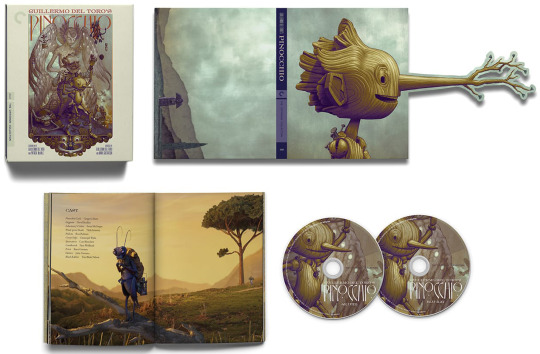
Special features:
Handcarved Cinema - Making-of documentary with co-directors Guillermo del Toro and Mark Gustafson and cast and crew (new)
Directing Stop-Motion - Featurette with Guillermo del Toro and Mark Gustafson (new)
Interview with Guillermo del Toro by film critic Farran Smith Nehme (new)
Interview with curator Ron Magliozzi on The Museum of Modern Art’s exhibition devoted to the film (new)
Featurette on the 8 rules of animation that informed the production (new)
Panel discussion with Guillermo del Toro, Mark Gustafson, production designer Guy Davis, composer Alexandre Desplat, and sound designer Scott Martin Gershin, moderated by filmmaker James Cameron
Conversation with Guillermo del Toro, Mark Gustafson, and author Neil Gaiman
Booklet with essays by film critic Matt Zoller Seitz and author Cornelia Funke
A classic tale is reborn through the inspired imagination of cinematic dream-weaver Guillermo del Toro, directing alongside Mark Gustafson. Realized through boundary-pushing, breathtakingly intricate stop-motion animation, this dark rendering of the fable of the puppet boy and his maker daringly transfers the story to Fascist Italy, where the irrepressible Pinocchio gradually learns what it means to be human through his experiences of war, death, and sacrifice. This Pinocchio imbues the oft-told tale with a bold new resonance about living with courage and compassion.
Pre-order Pinocchio.
#pinocchio#guillermo del toro#ewan mcgregor#david bradley#tilda swinton#criterion#criterion collection#the criterion collection#dvd#gift#james jean#burn gorman#cate blanchett#tim blake nelson#christoph waltz
107 notes
·
View notes
Text
Hello Puppet pals + Romeo fans
would you like a fresh, fun new dose of pain tonight
On Romeo (long post)
So way back in april, in the taiwan event they showed some material from what looks like early builds of the game. this is the still i want to talk about today

It's gepetto (romanized to "zepeto" here) asking if we've "killed the beast".
In the released version, we meet him outside in rosa isabelle street after the KOP fight. It looks as though he's even beside the same lamppost. There's no other similar scene of us meeting gepetto like this, so it's likely referring to the puppet king. (When we meet him on the bridge, he's seen that the donkey has been killed, so we wouldn't need to lie.) but the thing is, this question is a YES OR NO ANSWER, meaning one or the other would be a lie.
So maybe in the early versions of the game it was actually possible align with/spare the puppet king (and by extension romeo) and then lie to Geppetto about it. (I mean, it's possible that it's simply just lying about not killing him to G, and we couldn't spare him to begin with)
I think they realized that they couldn't possibly make such a narratively important boss fight optional and that story-wise it wasn't linear enough to work. The story as a whole is not nearly as effective without his loss.
TLDR: I'm speculating that that image was from an early version of the game, and Romeo could've actually lived but the devs made the hard call against this.
[It's also possible that they just made that image for the purposes of presentation, and that it doesn't mean anything, or that it's another beast entirely.]
But still, somehow it makes it the more tragic. *stares blankly into space.*
(bonus fun notes below)
In this IGN interview before release, Director Choi dropped a big hint about romeo here.
youtube
"Yes, this is the king of puppets. And we want to call him a character and not a monster, because he will be the centre of the story. So if you play more and discover more about him, you'll find out more about what he is and who he is."
the puppet king being lampwick was also inadvertently leaked by IGN in this video:
youtube
I don't think people unfamiliar with the story would know anything, but pinoheads definitely would've and did recognize what "romeo" alluded to

They kept Romeo's ENTIRE EXISTENCE a secret up until launch. During the roughly two years of promotions before release there was never any mention of Romeo before release. Zip, Nada, so much so that the budding fanbase was starting to assume that he wouldn't even be in the game. NO ONE saw it coming when we found out who exactly we killed. Developers did consider that people who had read the book would catch on to particular things, so, bravo neowiz
And here's the other ingenious thing - they showed us the "Mad Donkey" boss early on in the demo and NOW I'm starting to wonder if this was a deliberate play. Almost everyone assumed this was already the game's iteration of Lampwick, so Romeo came as a surprise, and I think the proceeding story reveals about who the King of Puppets truly was were very effective.
also.. it's extremely cute what they did with the character. Of course, Romeo is the canonical name of Lampwick in Pinocchio, but the name "Romeo" is also probably the most heavily associated with Shakespeare's play Romeo and Juliet (which also takes place in Italy, as does Pinocchio!). And then we meet him in a theatre, and he puts on a play for us before we fight. Romeo supposedly had an affinity for acting, as Carlo did with the piano (I have heard this around on reddit, I don't know where this originates from, please lmk if you've seen these lore items). But most of all, Romeo and Juliet is a deeply remembered tragedy - like Lampwick in collodi's pinocchio. They are two young boys who didn't get away.
(maybe all of this was so obvious to everyone else but i love it still haha)
Fun to revisit this stuff after release with new clarity.
[To Reiterate - All of this is just my speculation]
91 notes
·
View notes
Text
I have Things to say about the relationship and contrasts and similarities between Guillermo Del Toro's Pinocchio and Collodi's original version. I've seen a comparison to the 1940 film, but not to Collodi's book, even though it very clearly draws on and responds to the original Collodi version much more than to the Disney version. It's too late to write an entire essay, but here are my unpolished thoughts:
-Collodi wrote Pinocchio when Italy was recently unified and how it was meant to teach children to be good and obedient, while Del Toro's Pinocchio is set during WWII in Fascist Italy when nationalism and obedience are in overdrive and how this is used to demonstrate how obedience is not necessarily a good thing, and in fact is often harmful.
-Related: Pinocchio and Candlewick having to go to a fascist training camp instead of trying to go to Toyland - Del Toro's version arguing that the threat to children is fascism and fascist ideas and blind obedience, not playfulness and disobedience.
-In the Collodi version, Pinocchio becomes a real boy because of becoming obedient and following the rules, while in the Del Toro version he becomes a "real boy" not by changing to be more like others either in form or in behavior but rather by breaking the rules in order to save his father.
-Adding on to that, in the Collodi version, Pinocchio becomes a "boy like all the others" by changing to follow the expectations set on him, while in the Del Toro version, he learns that he doesn't need to be like somebody else - he can be loved for who he is
-Overall, Collodi version: follow the rules, be the person who you are expected to be. Del Toro version: break the rules when it is right to do so, be who you are and you shouldn't change to fit others' expectations of who you're supposed to be.
-There are also a bunch of easter eggs, like the coffin-bearers being rabbits
I could say more but it's late and anyways it's been a few years since I read Collodi's Pinocchio, so I'd probably need to reread it in order to do an actual essay on this, but anyways I found the ways in which Guillermo Del Toro's version basically directly responds to the Collodi version pretty neat and interesting. Maybe I'll write more on this sometime.
152 notes
·
View notes